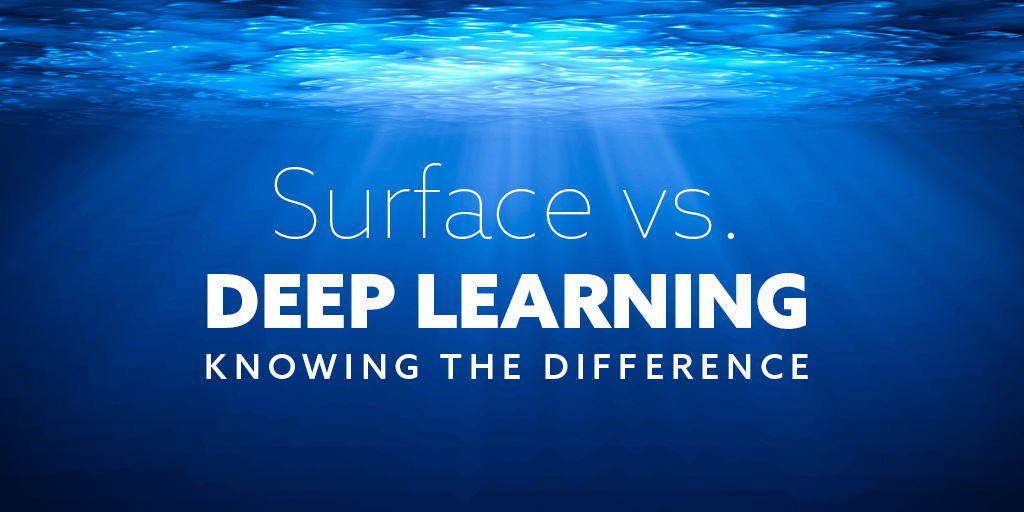
The biggest takeaway for many educators from the research in Visible Learning is that both types of learning are crucial to student success. We must go deeper than the surface-level learning that occurs most often in classrooms. At the same time, we cannot go deep until we break the surface. Students must gain some knowledge about a topic before they are able to go deeper.
One of the first questions for teams to consider is which types of knowledge are which? How much surface learning is needed to be able to go deeper into a concept? What does “going deeper” look like for each of the content standards?
Here are some activities that teacher teams can work through to help differentiate which type of learning is needed for each skill:
- Unpacking the Standards: This is a tactic used by educators when new standards (such as Common Core) are published. It isn’t necessarily a complex task (here is a good, quick overview), but it is a good starting point for teacher teams. It creates a common understanding of what is being taught. By focusing on the nouns and the verbs of the standards, the teachers can collectively determine what exactly the standards look like when students learn them in the classroom.
- Standards Sort: After the standards are “unpacked,” teacher teams can then do a quick sort or T-chart to determine which skills require surface learning and which require deeper learning. One key indicator for finding where the standards fall is the verb used in the standard. If the standards require “understanding” or “recalling,” then they are probably surface-level learning. If the standards ask students to “analyze” or “evaluate,” deeper learning is required. For these deeper learning skills, the team must collaborate about the type of surface level, so prerequisite skills are needed first.
- Grade Card Collaboration: The next logical step for teams is to determine how these standards should be assessed. I refer to this as “grade card collaboration,” but without a standards-based report card, this discussion may be more individualized for the isolated skill. For example, common assessments that are developed for surface-level skills can probably be multiple choice questions. Because the knowledge needed is pretty basic, the type of assessments can match it. On the other hand, for deeper learning and more complex tasks, teachers will probably need a common rubric to determine the level and depth of learning. Teams should put the assessments to work and then collaborate on their effectiveness again after the tests are given. Teacher teams can also score projects from other classrooms to help calibrate the rubrics as a team.
- Project-Based Learning: This probably goes without saying, but PBL projects are key to making all this go. After the standards are unpacked, the skills are sorted as surface or deep, and assessments are created based on each type of learning, it is time to put it all into action. The best, most effective way to make this work is to have students complete multi-step, complex projects as a team or individually. Surface-level knowledge can be taught in whole-group settings or in small groups and will likely need to be ongoing through the projects. The deeper learning that teachers would like to see needs to be clearly communicated through both learning goals and through the rubric itself. Students should debrief and reflect on their learning, and should evaluate and observe the other students’ projects in the classroom.
These four bullet points sound very simple in a short article, but in reality, this takes hours and maybe even years of work to complete. Just unpacking the standards is a large undertaking when done well. The good news for many schools and teachers is that step one has already largely taken place. What hasn’t taken place is the second step of discussing which skills are surface level and which are deeper learning. If there is a good working knowledge of the standards, this second step won’t take much time. The assessment and project piece that follows requires an ongoing feedback loop of reflection and altering the instruction that has taken place. Some students will come with a large amount of background/surface knowledge, so that step will move quickly, but other students will require more time to develop the working knowledge needed to go deeper.
Even though it is a lot of work, hours of collaborating, and an ongoing process, this type of learning yields much better results for students in both achievement and retention of the skills they will need to be successful in the future.
For more teaching tips, and to stay up to date with the latest education and technology trends, be sure to subscribe to the Educator blog today.



